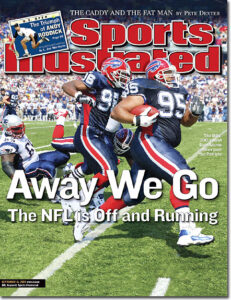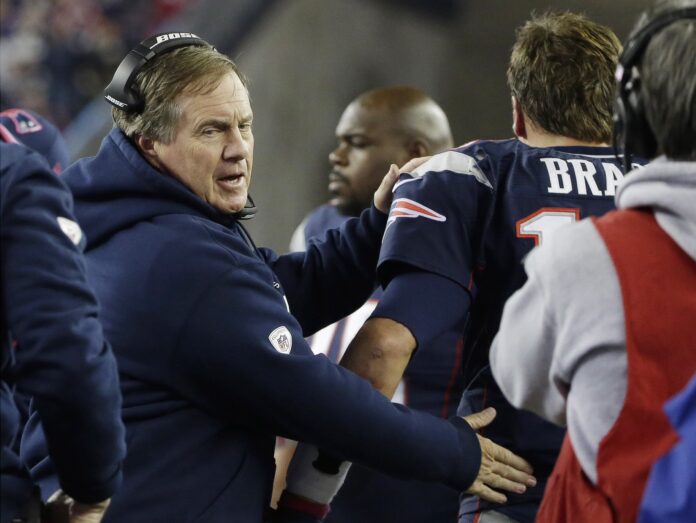I understand that sentiment, and it’s a satisfying one.
The thorough victory the Patriots secured over the Bengals last night holds no greater weight than any other game.
This is a truth that players and coaches come to recognize as they lay their heads down at night.
What’s changed is the contented smile that now graces your sleep.
Players vary in their susceptibility to external distractions; some are more attuned than others.
Yet, it’s not a matter of ‘whether you heard the noise’ or ‘whether you didn’t.’
You were aware of its presence. When you’re conscious of falling short of your potential or expectations, there’s no need for the message to reach your ears.
Perceiving without hearing and then emphatically disproving them – completely, absolutely, dead wrong.
On mornings like these, a player might feel a strong urge to break into an “I-told-you-so” celebration.
However, more often than not, they opt to keep it confined within the locker room.
There’s no pressing need to exhaust all the reserves of disrespect in one go, even if it would be justified.
The first step is understanding that as bad as the Patriots were against the Chiefs, some of the outside conclusions were worse.
Indeed, there was a sense that things weren’t as they should be.
There was a need for improvement within this team to reach their desired destination.
However, this straightforward observation should not be conflated with the irrational overreactions and witch-hunting that dominated the week.
Players and coaches are acutely aware of this crucial distinction.

When the rationale behind why something fell short is so off-base – as it was in both ’03 and last week, according to the critics – it tightens the bonds in the locker room while pushing everything else further away.
What’s considered fact outside that space often doesn’t hold true at all. In 2003, people believed many things that simply weren’t accurate, and the same happened here.
Can you believe a locker room full of guys who outplayed the NFL’s finest were considered unfit for the league just days ago?
Reality doesn’t have such extreme highs and lows; that’s purely perception. Instances like these highlight just how unreliable perception can be.
This week in New England had a strikingly similar vibe. A locker room filled with players deemed too old, too subpar, too sluggish, too well-compensated, too unintelligent… too much of everything.
Then, all of a sudden, none of those labels applied. Now they’re considered excellent?
The initial step is recognizing that as off as the Patriots were against Kansas City, some of the external judgments were even more misplaced.
The locker room isn’t blind to this fact; it sometimes serves as motivation.
As a player, proving those outside the locker room wrong isn’t the ultimate objective, but the satisfaction tends to linger until it’s time to gear up and get back to work.
From a player’s perspective, it’s not always the criticism itself that rings hollow.
It’s the conclusions drawn from it that defy reason. You recognize that the irrationality will soon retreat back to its lair, biding its time until the next opportunity arises.
You also understand that most fans don’t endorse irrationality, but the voices of reason often get drowned out.
As a player, no fan or media member holds you to a higher standard than you hold yourself.
When there’s a significant issue, everyone can see it. But oversimplified notions like “if you just do this” or “the real problem is…” fall flat on a football-trained ear.
There’s always more complexity involved; it’s the nature of the game.
Players and coaches thrive on practice and study, two facets unseen from the outside.
I believe most fans and media members would be astonished by the many factors considered in what might seem like straightforward decisions for an NFL game plan.
The distinction between success and failure is often razor-thin. Solutions are challenging to convey from a football insider to an outsider.
It might sound like a cop-out when you break down an X’s and O’s solution, but frequently, it isn’t.
It’s a process, one that’s hard for an outsider to appreciate if they allow irrational talk to seep in honestly.
There are countless methods to address problems in a complex game. Skipping past them to determine who “fails” or who’s at fault is just too tempting for those who don’t grasp it, and it causes the locker room to pull inward each time it happens.
The notion that one can transition from being exceptionally good at football to suddenly not and then revert based on a single day’s performance?
Seeking answers is one thing, but developing wild theories like this is quite another.
The real insights lie in the nuances, which aren’t as attention-grabbing.
Saying “someone needs to be fired” is more straightforward than acknowledging “someone needs to improve.”
When everyone is either terrible or exceptional, there’s little room for the subtleties of progress.
However, progress is precisely what the Patriots achieved on Sunday night.
As a player, you hope the lesson tempers the irrationality next time, but you know deep down it probably won’t.
So, you carry on with a smile as you prepare for another demanding week of hard work.
The objectives remain constant… it’s just the expressions you wear in pursuit of them that change.

